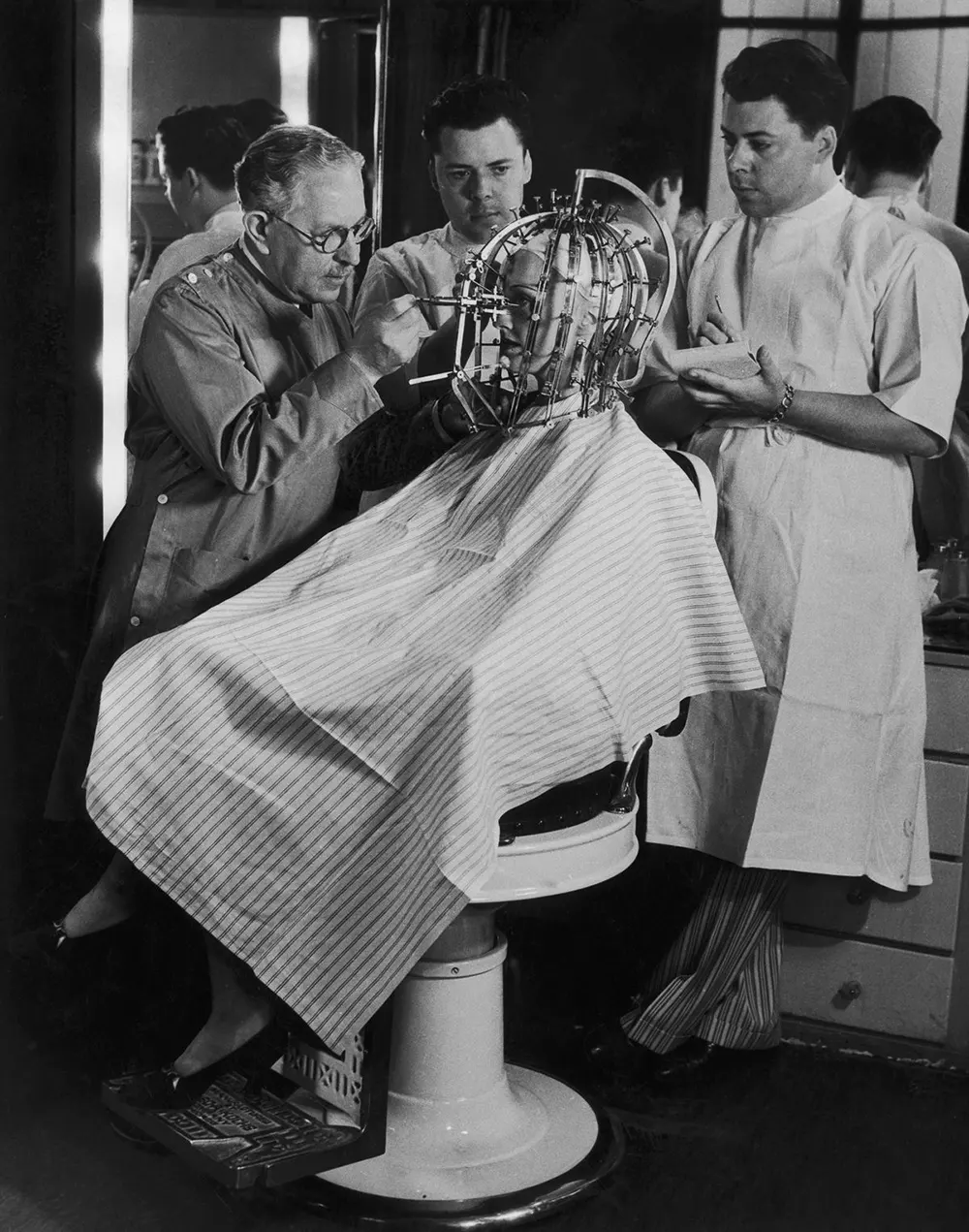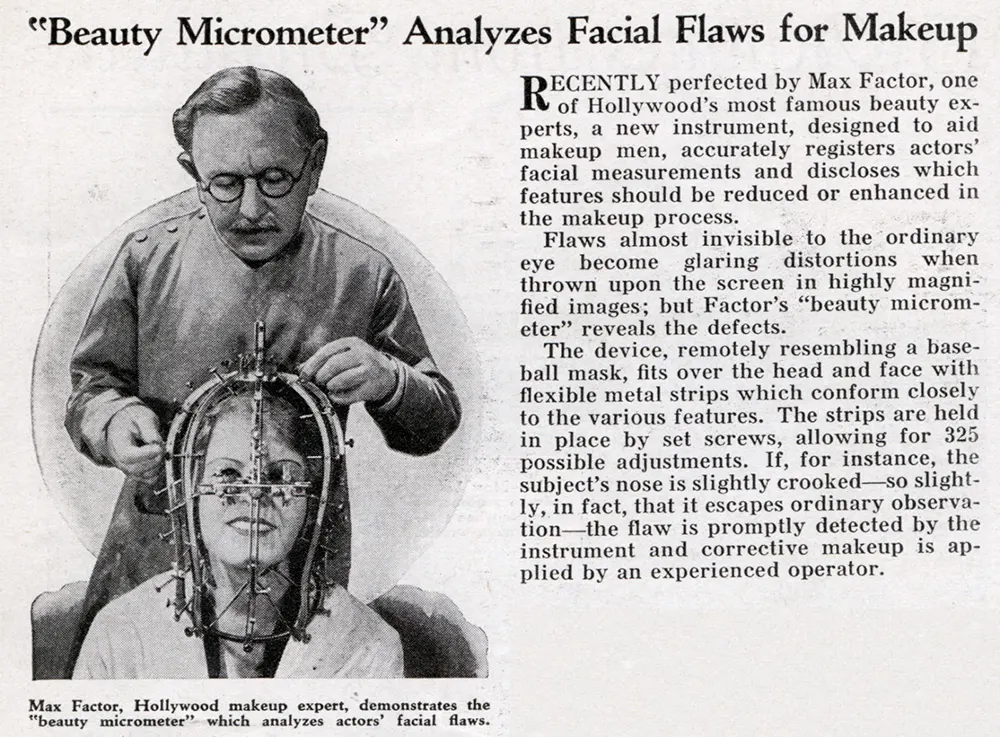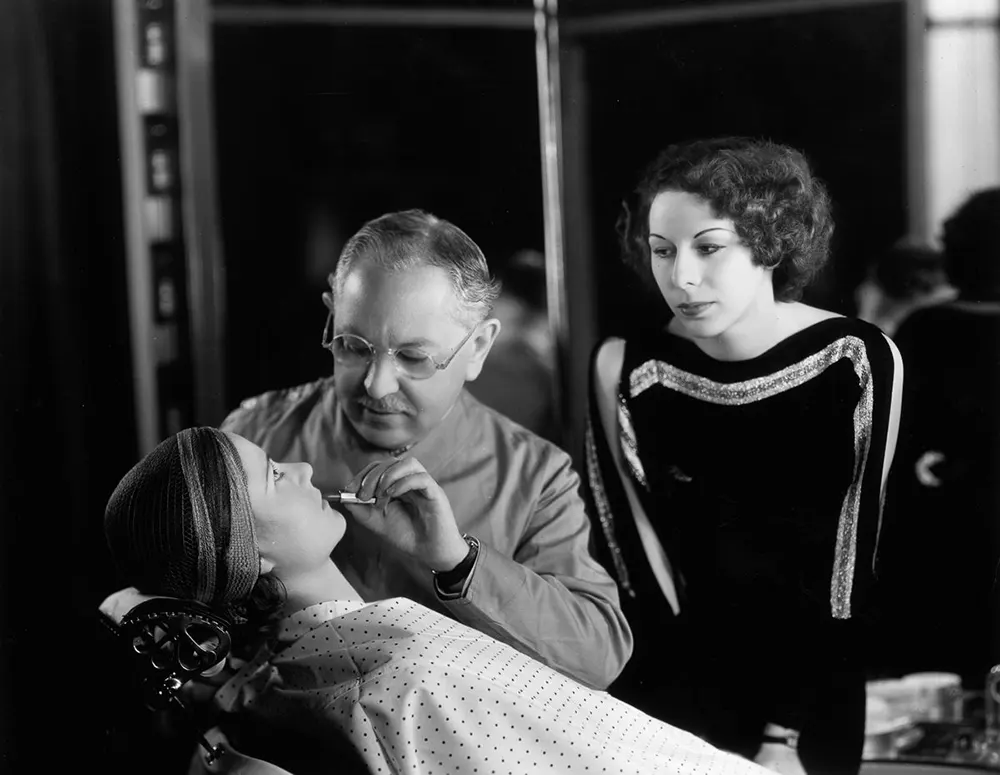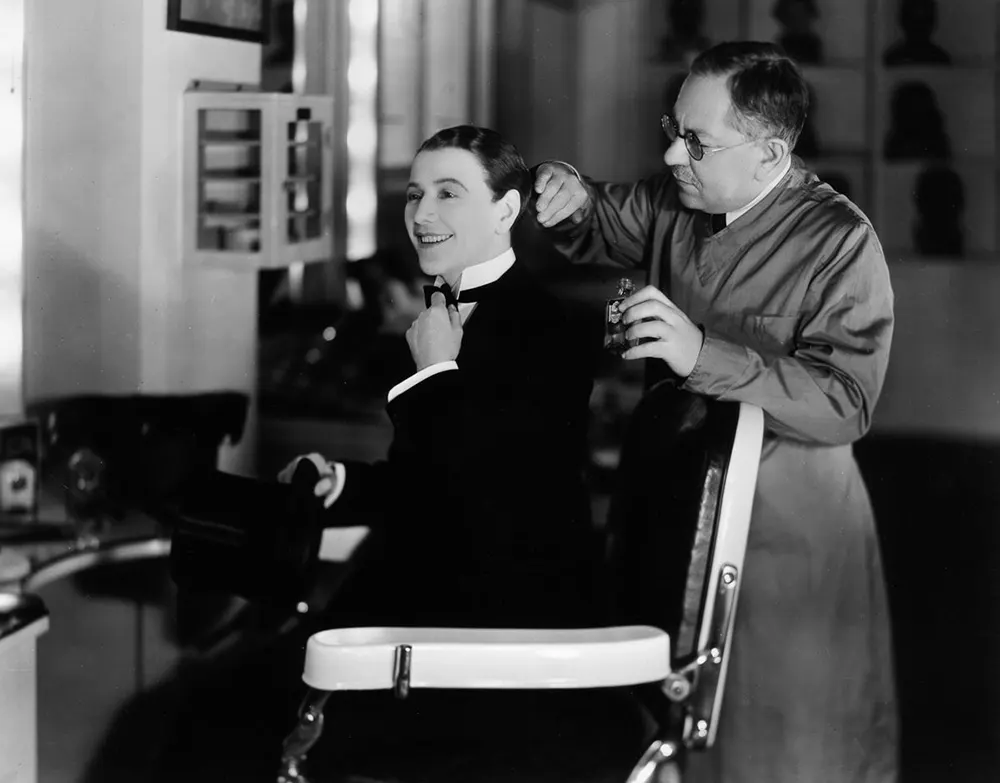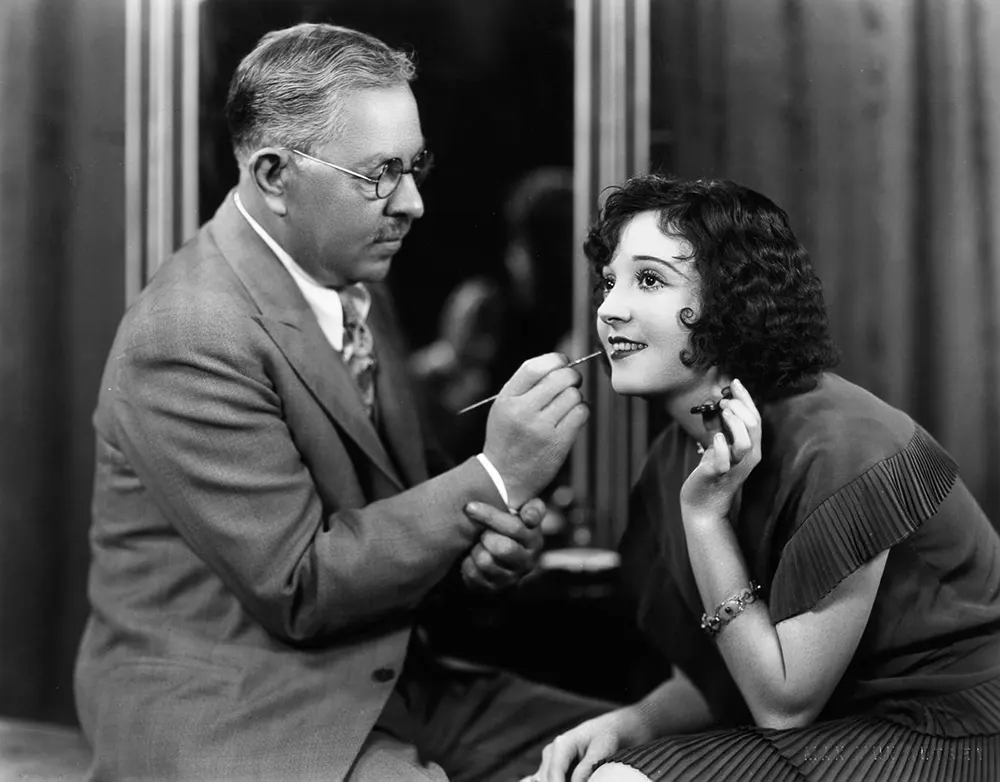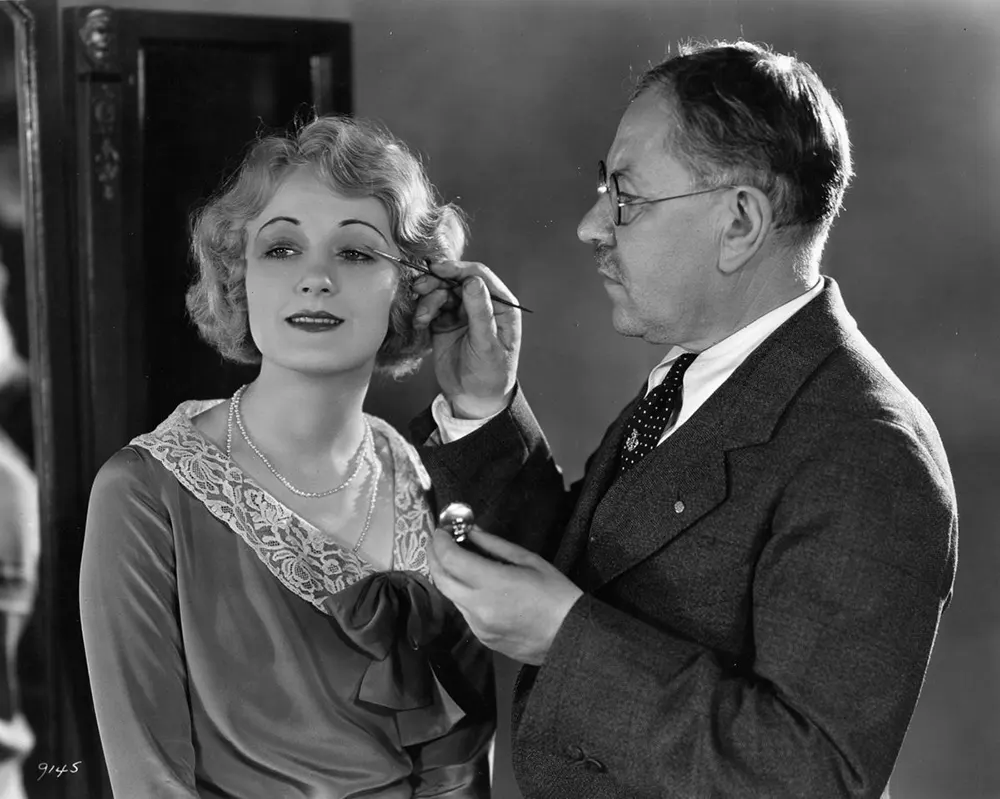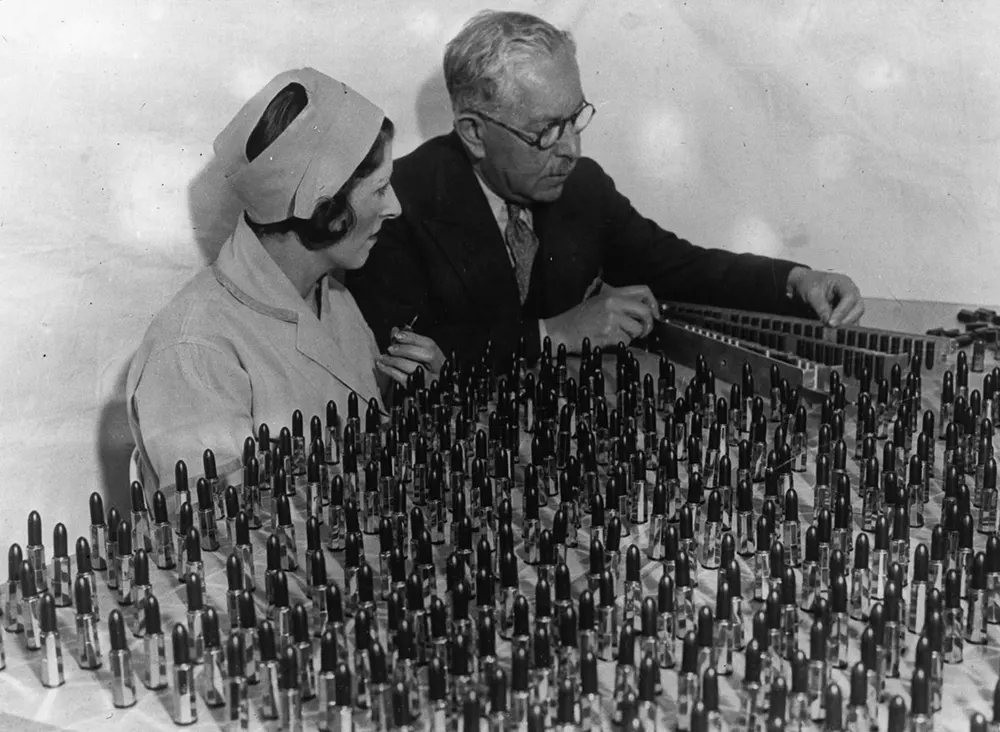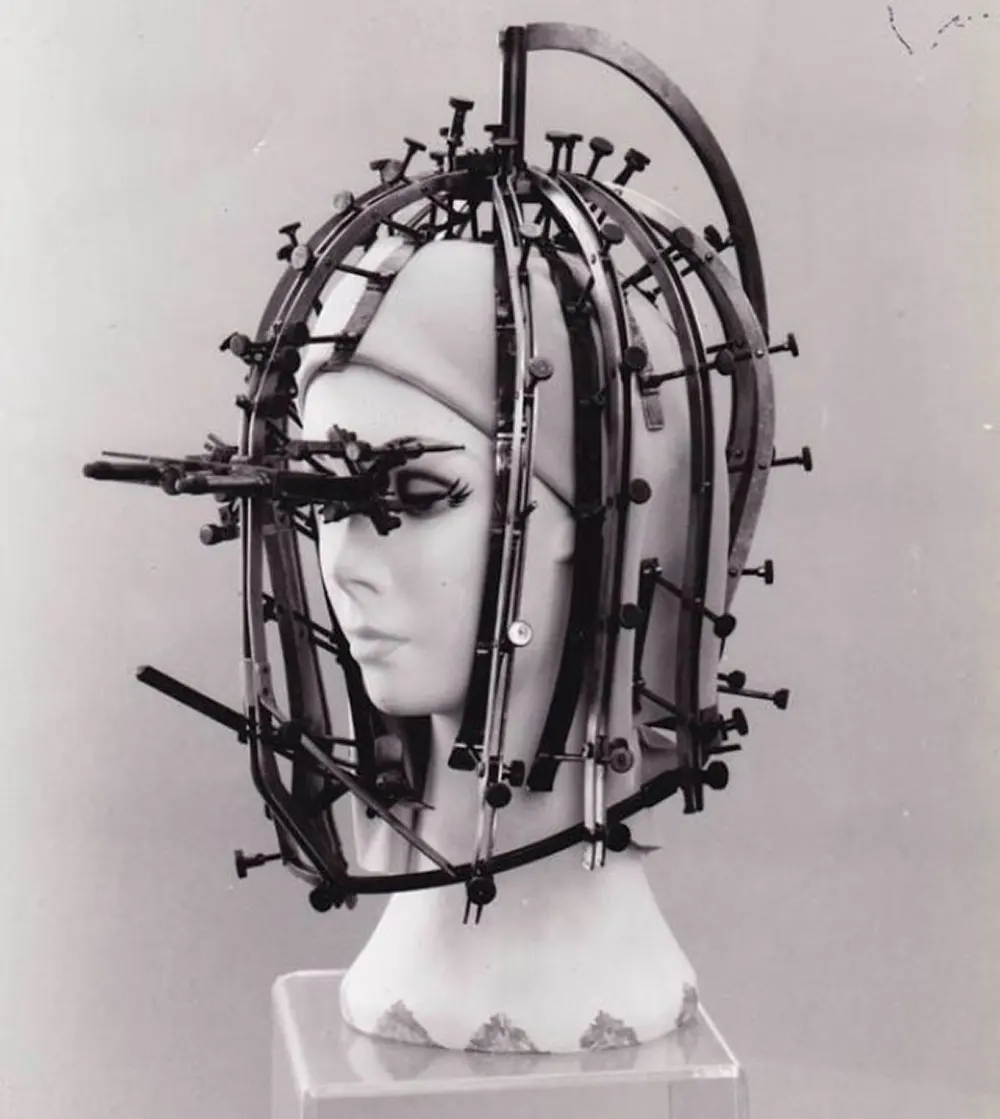In the 1930s, make-up legend Max Factor came up with an ingenious invention combining phrenology, cosmetics, and a pseudo-scientific approach to analyze a woman’s facial flaws. This is the Beauty Micrometer, a Clockwork Orange-style device that claimed to measure facial ugliness. Placed on and around the head and face, the beauty micrometer uses flexible metal strips which align with a person’s facial features. The screws holding the strips in place allow for 325 adjustments, enabling the operator to make fine measurements with a precision of one-thousandth of an inch. The inventors stated that there are two key measurements that they looked for: the heights of the nose and forehead should be the same, and the eyes should be separated by the width of one eye. When imperfection is identified, corrective make-up can be applied to enhance or subdue the feature. The company Max Factor claims that the device helped Max Factor, Sr. to better understand the female face. The beauty micrometer was completed in 1932 and was primarily intended for use in the movie industry. When an actor’s face is shown on a very large scale their “flaws” are magnified and can become “glaring distortions”, according to the Modern Mechanix article. This device was intended to remedy the perceived problem, and the inventors also envisioned it being used in beauty shops. However, it did not become popular and did not gain widespread usage. Only one beauty micrometer is believed to exist. It is featured in a display at the Hollywood Entertainment Museum. Born in 1872 in what is now Poland, Maksymilian Faktorowicz started work at a young age in the wigs and cosmetics industry. After serving in the military, he opened a cosmetics shop near Moscow and soon rose to become the official cosmetics expert for the Imperial Russian Grand Opera and even the royal family. By 1904, concerned about the increasing anti-Jewish persecution developing in the Russian Empire, he and his wife decided to follow his brother Nathan and uncle Fischel to America. The family passed through Ellis Island, where a customs officer shortened their surname from Faktorowicz to Factor. Factor settled in St. Louis and later Los Angeles, where he hoped to get in on the ground floor of the nascent motion picture industry with his custom-made wigs and face products. Initially, he established a shop on South Central Avenue, and advertised the business as “Max Factor’s Antiseptic Hair Store.” After the foundation of “Max Factor & Company” in 1909, he soon became the West Coast distributor of Leichner and Minor, two leading theatrical make-up manufacturers.
Factor began experimenting with various compounds in an effort to develop a suitable make-up for the new film medium. By 1914, he had perfected the first cosmetic specifically created for motion picture use—a thinner greasepaint in cream form, packaged in a jar, and created in 12 precisely-graduated shades. Unlike theatrical cosmetics, it would not crack or cake. With this major achievement to his credit, Max Factor became the authority on cosmetics for film making. Soon, movie stars were eager to sample the “flexible greasepaint,” while movie producers sought Factor’s human hair wigs. He allowed the wigs to be rented to the producers of old Westerns, on the condition that his sons were given parts. The boys would watch the expensive wigs. Factor marketed a range of cosmetics to the public during the 1920s, and insisted that every girl could look like a movie star by using Max Factor cosmetics. In 1920, Max Factor gave in to his son’s suggestion, and officially began referring to his products as “make-up.” Until then, the term “cosmetics” had been used, because “make-up” was considered to be used only by people in the theater or of dubious reputation—not something to be used in polite society. The Academy of Motion Picture Arts and Sciences presented Max Factor with an honorary Academy Award in 1929 for his contributions to the film industry. Additionally, Max Factor is honored with a star on the Hollywood Walk of Fame.
(Photo credit: Mashable.com / Wired / Wikimedia Commons / Flickr). Notify me of new posts by email.
Δ Subscribe


